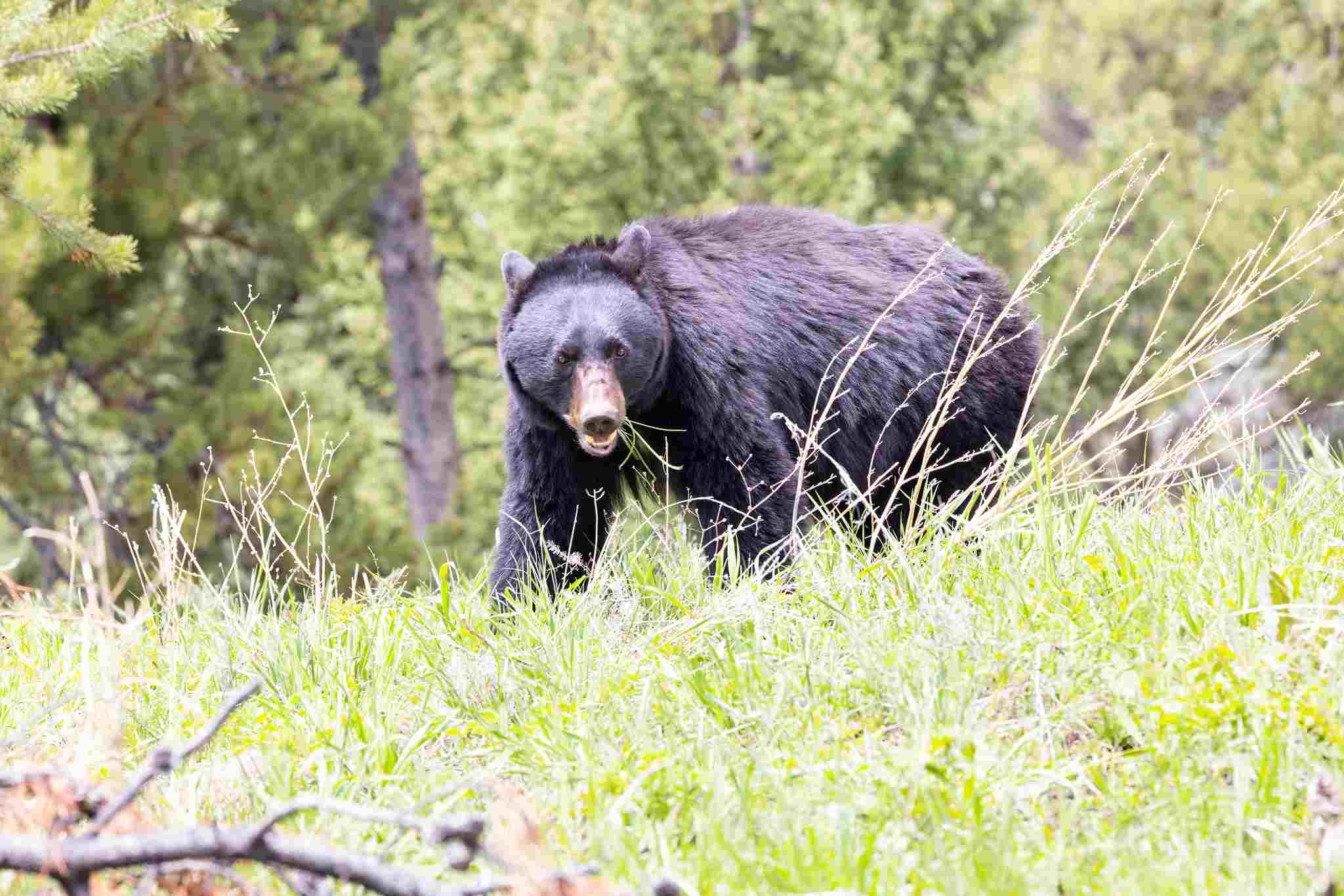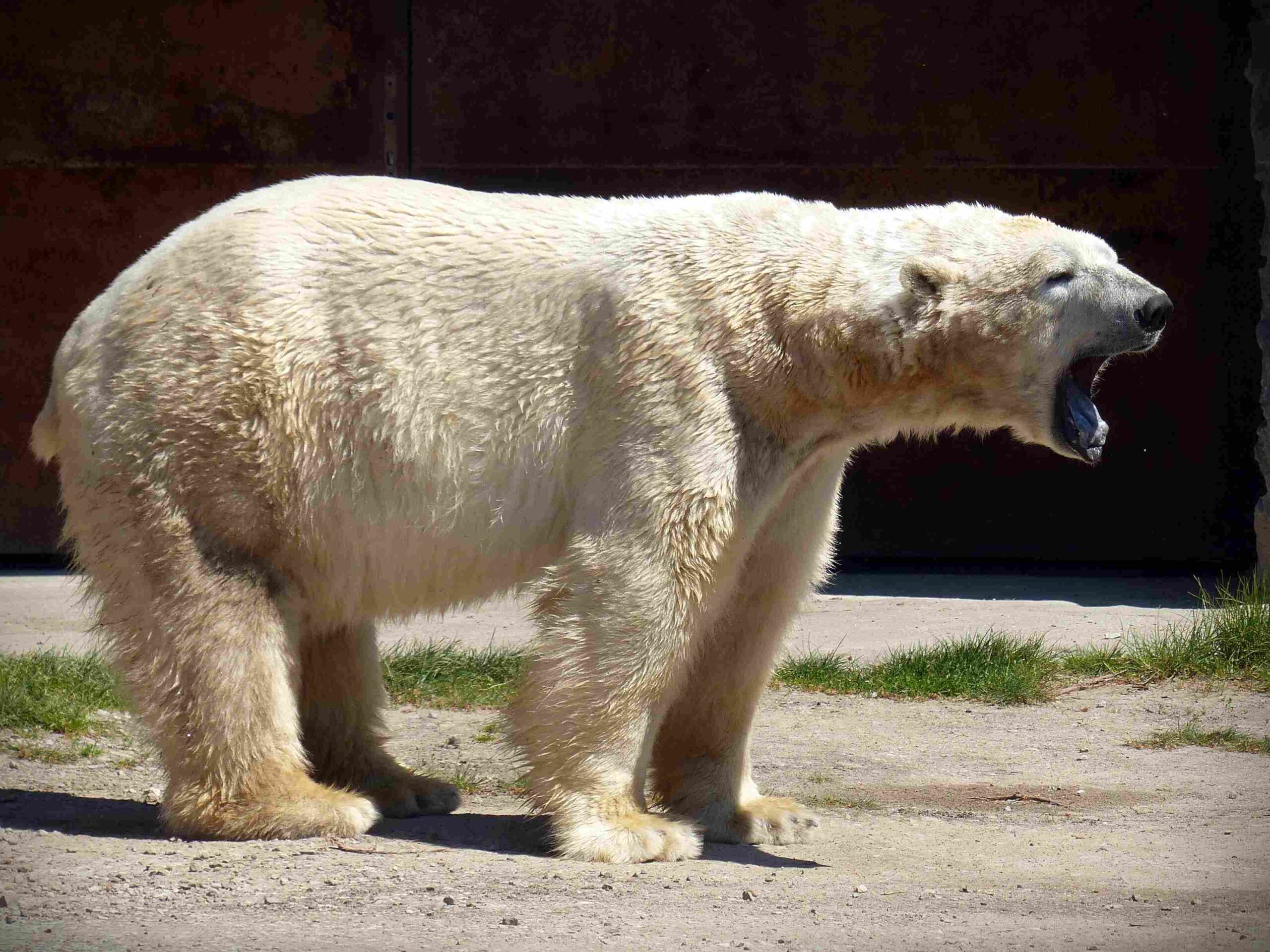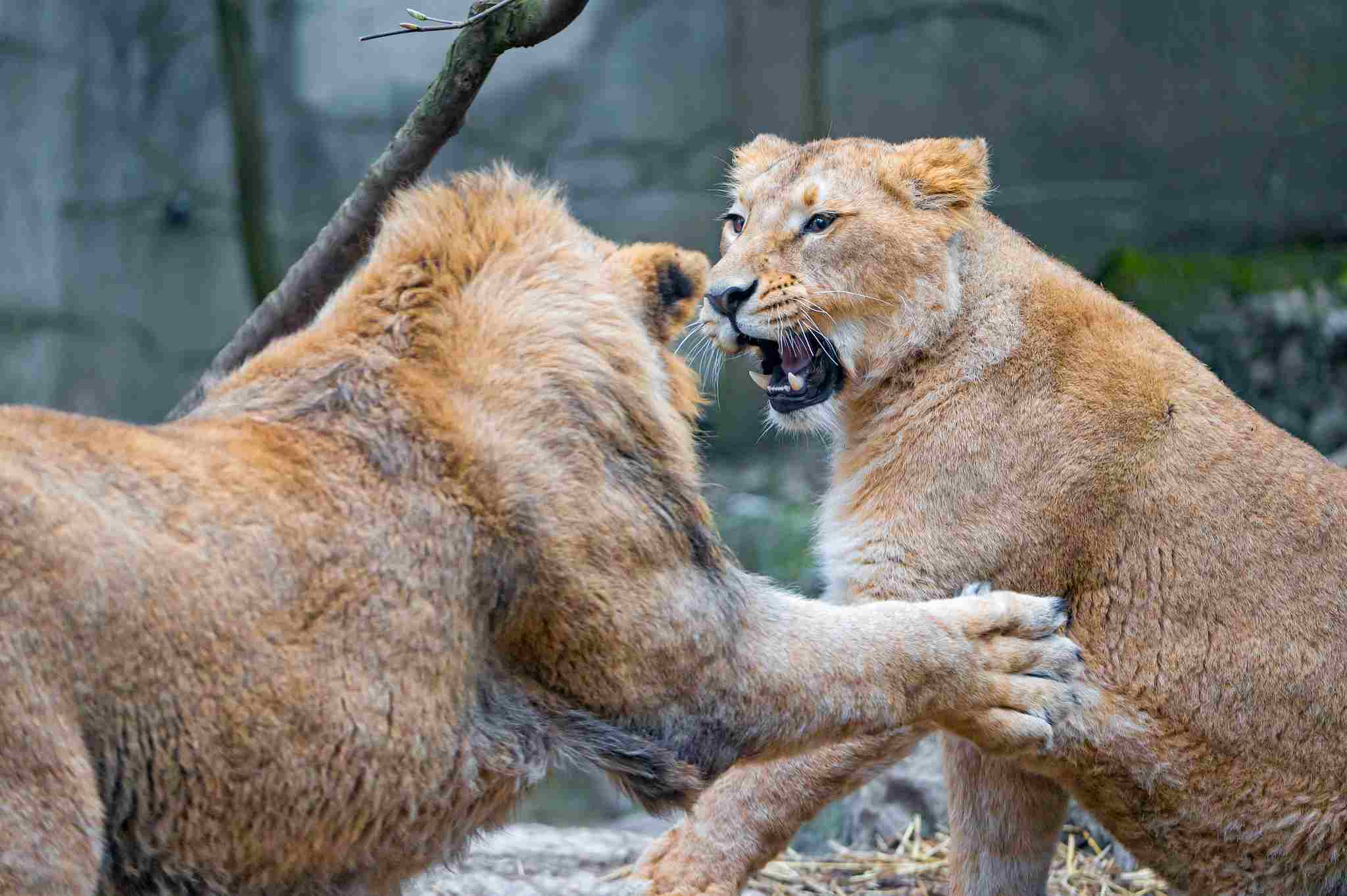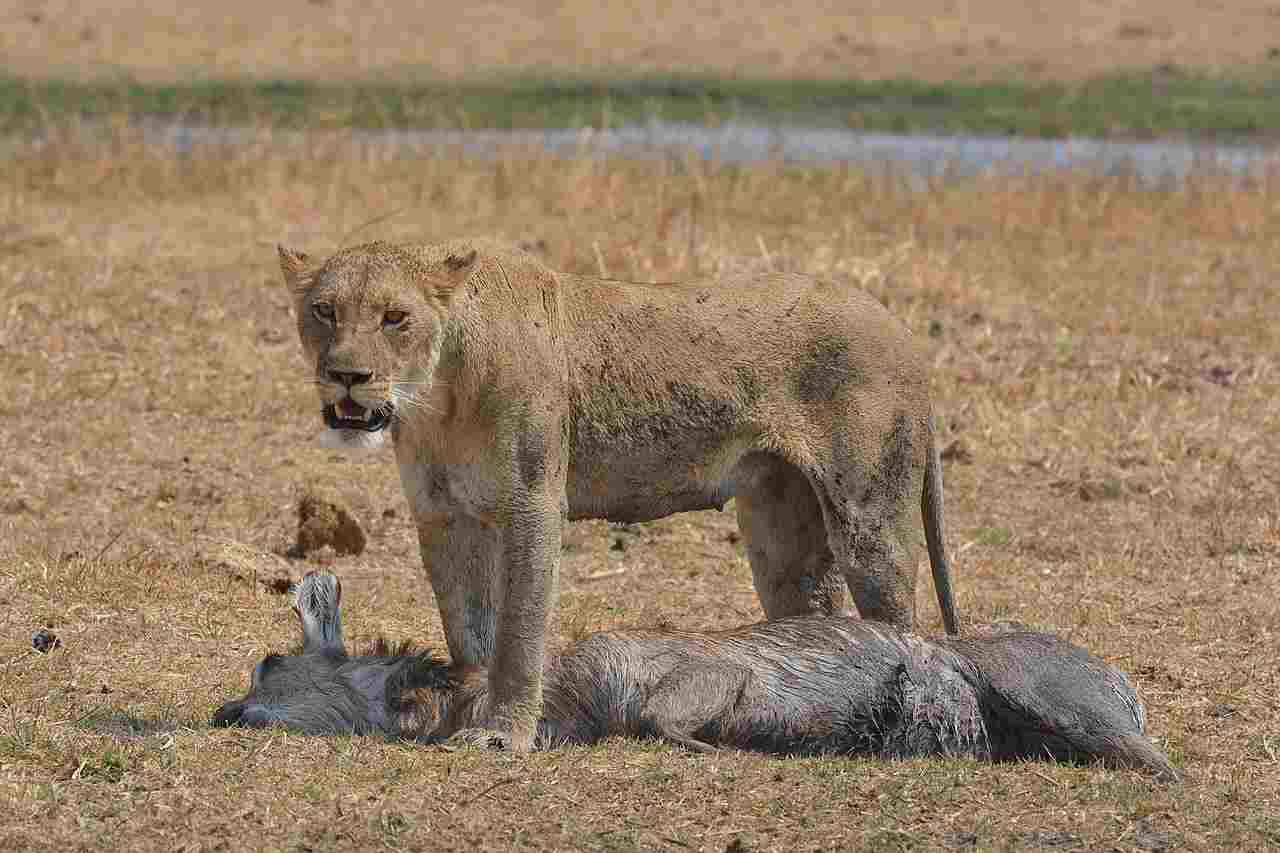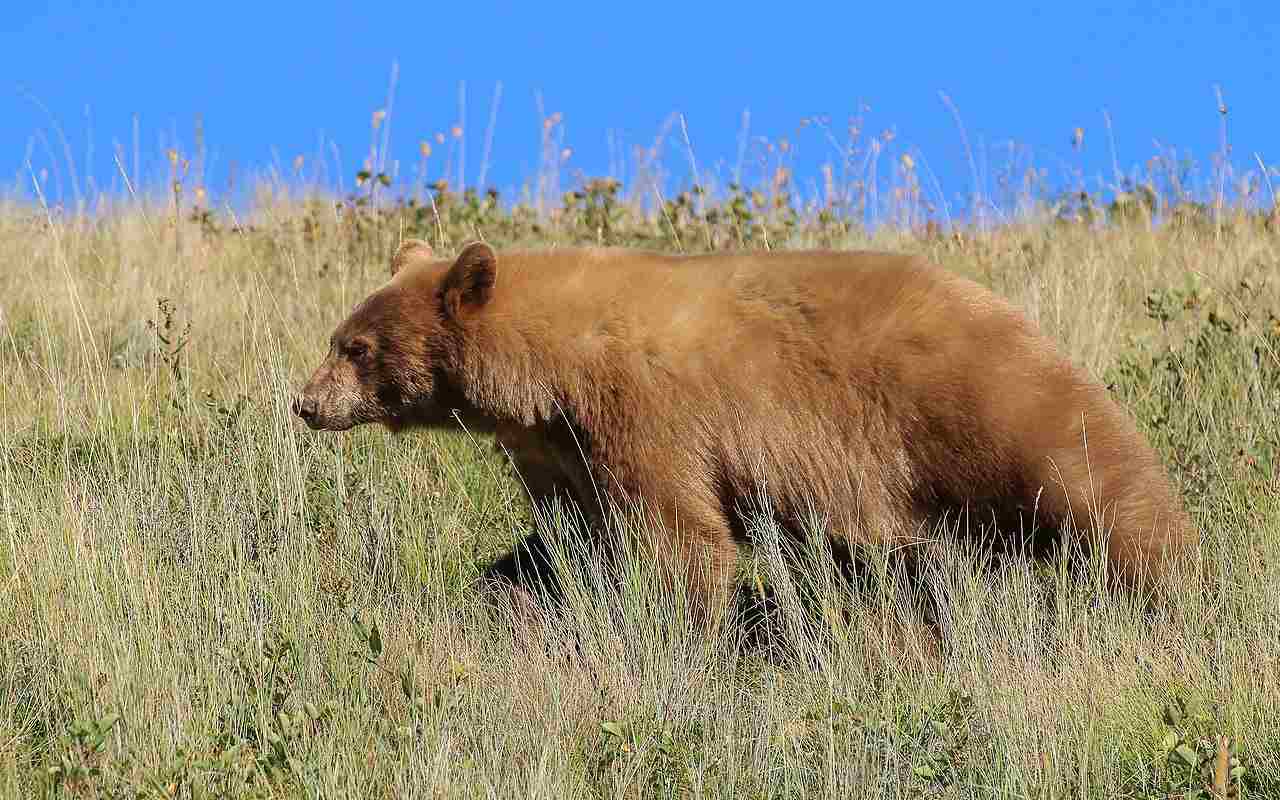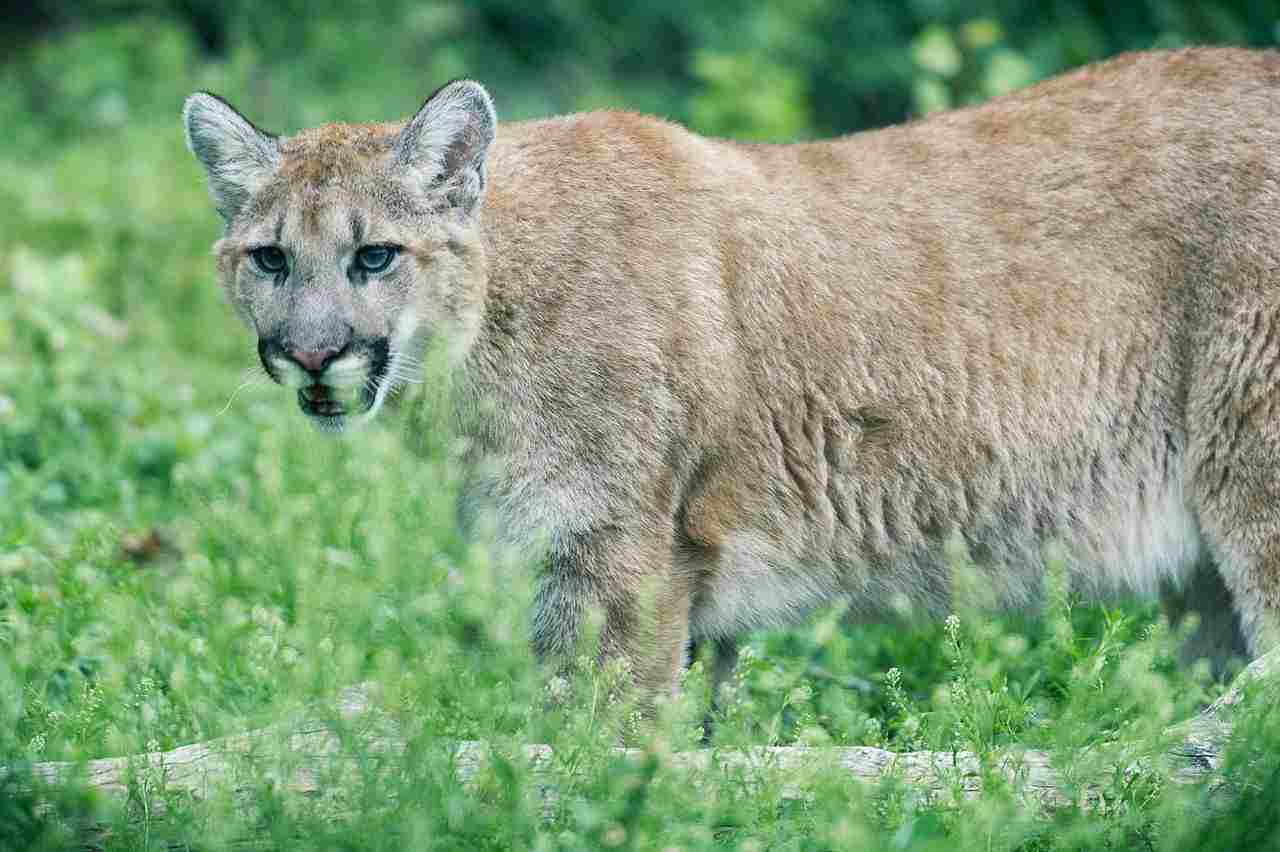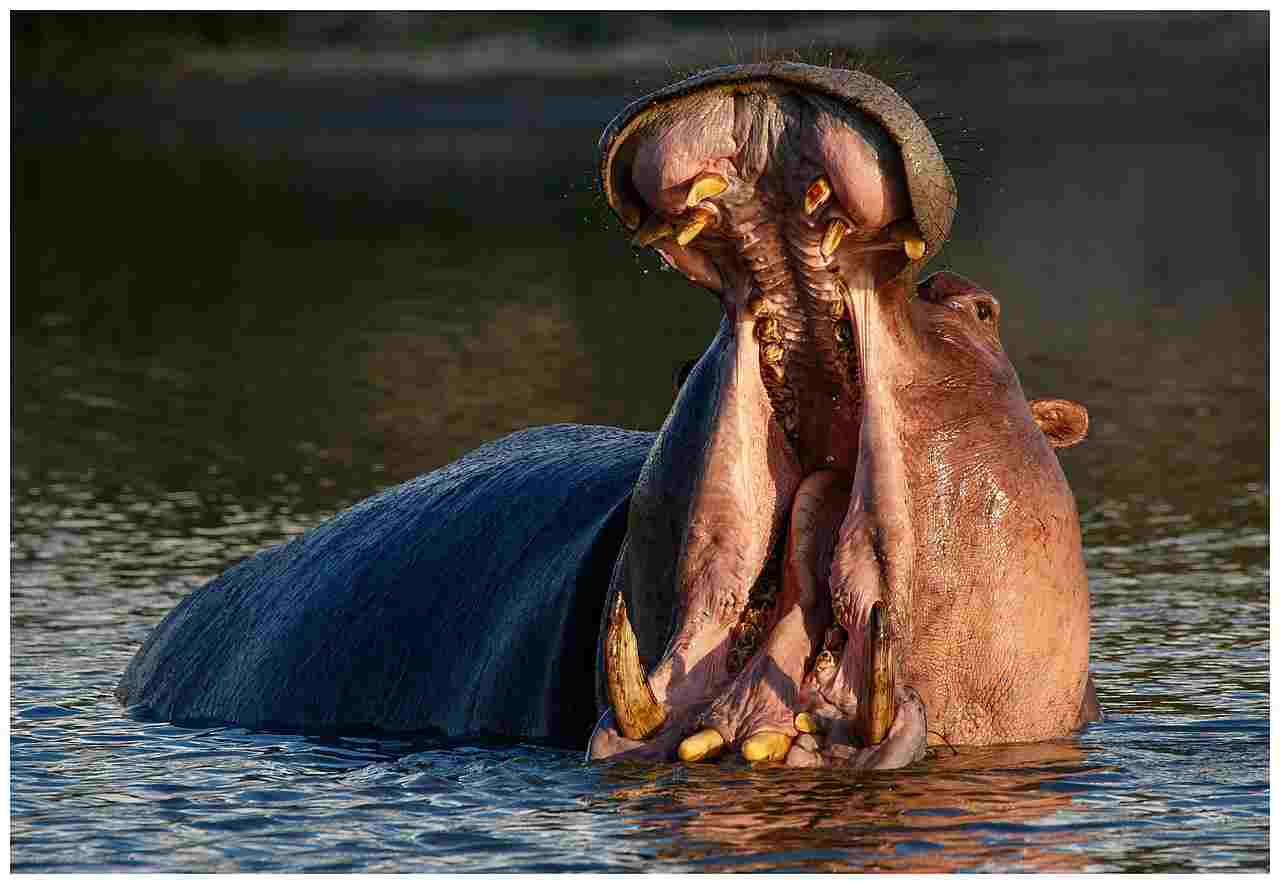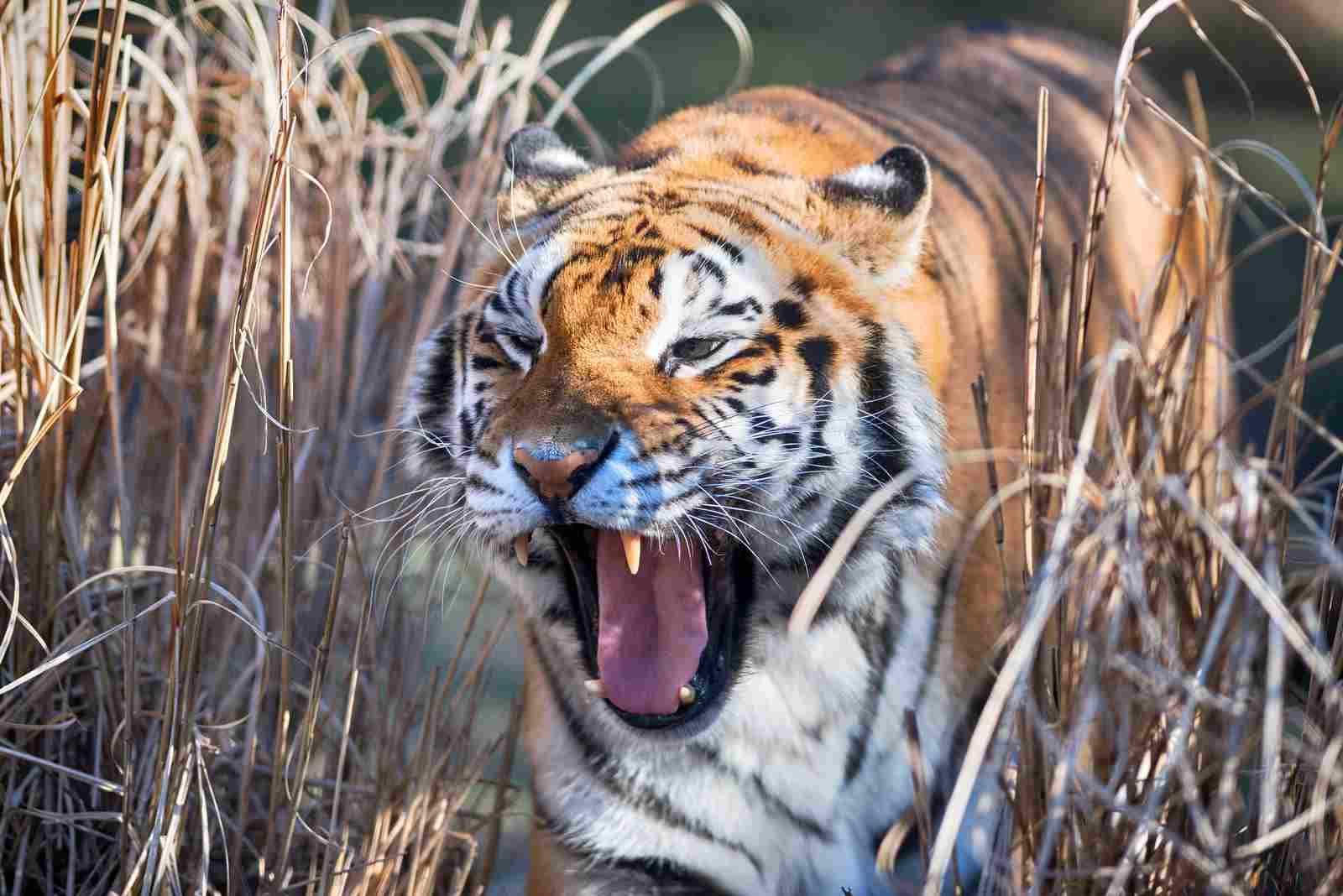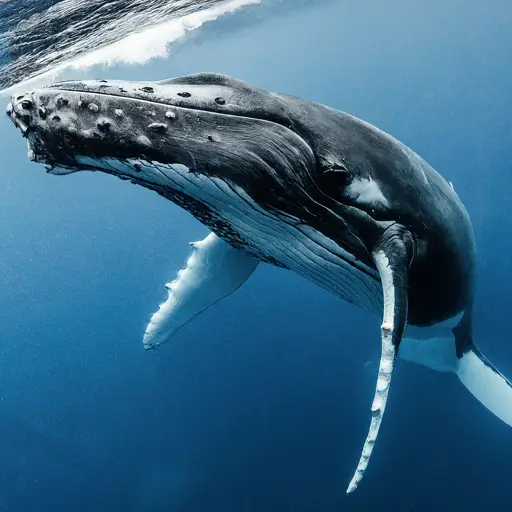Bear Vs Lion Size, Weight, Behavior and Ecological Comparison
The Bear vs Lion comparison is not just about physical attributes, but also about behavioral and ecological aspects. When comparing these animals, it is important to consider factors like size, weight, and taxonomic classification.
Key Outcomes of Comparison
Size:
When comparing the size of a bear and a lion, it is important to note that bears are generally larger. The average size of a bear can range from 4 to 9 feet in length, depending on the species, while lions typically measure around 6 to 8 feet in length.
Weight:
Bears also outweigh lions, with the average weight of a bear ranging from 200 to 1,500 pounds, while lions weigh between 250 to 550 pounds.
Taxonomic Classification:
Bears belong to the family Ursidae, while lions are classified under the family Felidae.
Hypothetical Conflict:
In a hypothetical conflict between a bear and a lion, it is likely that the bear would have the advantage. This prediction is based on the bear’s larger size and strength, which would likely enable it to overpower the lion in a confrontation.
*Physical Evaluation
1). Size
When comparing the size of bears and lions, several factors come into play. One of the key measurements is the average height and total body length of these animals. Bears are known for their impressive size, with some species reaching heights of up to 10 feet and total body lengths of over 7 feet. On the other hand, lions are slightly smaller in terms of height, averaging around 3.5 to 4 feet, but they make up for it with their longer body length, which can range from 6 to 8 feet.
In terms of which animal is larger, it ultimately depends on the specific species being compared. For example, the Kodiak bear, which is a subspecies of the brown bear, is considered the largest bear species and can outweigh lions by a significant margin. However, when comparing an average-sized bear to an average-sized lion, the lion may appear larger due to its longer body length.
2). Weight
When comparing the weight of bears and lions, it is important to consider the average weight of both male and female individuals. Bears are known for their impressive size and can vary significantly in weight depending on the species. For example, the Kodiak bear, which is the largest subspecies of brown bear, can weigh up to 1,500 pounds (680 kilograms). On the other hand, lions generally weigh less than bears, with adult males weighing around 420 pounds (190 kilograms) on average.
In terms of which animal is heavier, it again depends on the specific species being compared. While bears are generally heavier than lions, there are exceptions. For instance, a large male lion can weigh more than a smaller bear. However, when comparing an average-sized bear to an average-sized lion, the bear is typically heavier.
The weight of these animals plays a crucial role in their survival and behavior. It affects their ability to hunt, defend themselves, and establish dominance within their respective habitats.
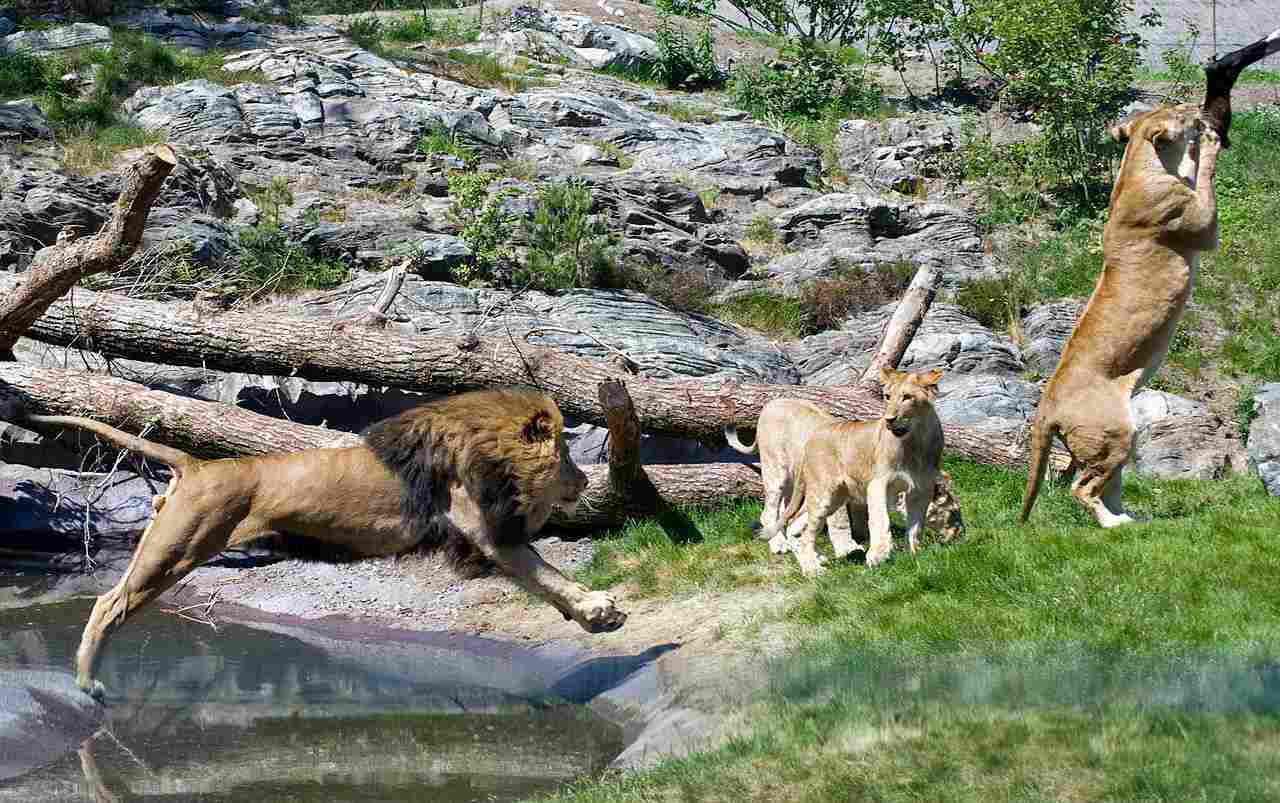
3). Skeletal Anatomy
The skeletal anatomy of bears and lions reveals significant differences in their bone structure and density. Bears have a robust skeletal structure, with strong bones that are adapted to support their massive size and weight. Their bones are dense and well-developed, providing them with the necessary strength and stability for activities such as digging, climbing, and foraging. In contrast, lions have a more streamlined skeletal structure, optimized for agility and speed. Their bones are lighter and more slender, allowing them to move swiftly and efficiently during hunting and chasing prey.
The differences in skeletal anatomy between bears and lions are reflective of their distinct evolutionary adaptations and ecological roles. Bears, being primarily omnivorous, require a sturdy skeletal system to support their varied diet and activities. Their strong bones enable them to withstand the physical demands of digging for roots, tearing apart logs, and engaging in territorial disputes. On the other hand, lions, as apex predators, rely on their agility and speed to capture and subdue their prey. Their lighter skeletal structure allows for quick movements and efficient hunting strategies.
4). Mode of Locomotion
Bears and lions have distinct modes of locomotion that are adapted to their respective habitats and hunting strategies.
Bears are known for their ability to run, climb, swim, and even leap. Their powerful limbs and strong muscles allow them to move with agility and speed on various terrains. Bears are excellent climbers, using their sharp claws and muscular limbs to ascend trees in search of food or to escape potential threats. Additionally, their large bodies and webbed paws make them proficient swimmers, enabling them to navigate through water bodies with ease. Bears are also capable of running at impressive speeds, especially when they are chasing prey or defending their territory.
On the other hand, lions are renowned for their exceptional running and leaping abilities. They are built for speed, with long and muscular limbs that propel them forward with remarkable agility. Lions can reach speeds of up to 50 miles per hour in short bursts, allowing them to quickly close the gap between themselves and their prey during a chase. Their powerful hind legs enable them to leap great distances, which can be advantageous when ambushing or pouncing on unsuspecting prey.
5). Speed
When it comes to speed, both bears and lions possess impressive capabilities, but there are notable differences between the two.
Bears are known for their agility despite their large size. They can reach an average speed of 30 miles per hour, allowing them to chase down prey or escape potential threats. However, compared to lions, bears are generally slower in terms of top speed.
On the other hand, lions are renowned for their exceptional speed and agility. They can reach speeds of up to 50 miles per hour in short bursts, making them one of the fastest land animals. This incredible speed gives lions a significant advantage when it comes to hunting and capturing prey.
In a direct comparison, lions are faster than bears, showcasing their superior running abilities. Lions’ long and muscular limbs, combined with their powerful hind legs, enable them to achieve remarkable speeds and quickly close the gap between themselves and their prey.
6). Agility
When comparing the agility of bears and lions, we need to consider their speed and mode of locomotion. Both animals exhibit impressive agility, but there are distinct differences between them.
In terms of speed, lions have the advantage. With their long and muscular limbs, lions can reach speeds of up to 50 miles per hour in short bursts. This exceptional speed allows them to swiftly maneuver and change direction while hunting, making them highly agile predators.
On the other hand, bears, despite their large size, possess surprising agility. They can reach an average speed of 30 miles per hour, which is remarkable considering their bulk. Bears demonstrate their agility through their ability to chase down prey or escape potential threats.
When it comes to mode of locomotion, lions rely on their powerful hind legs and flexible spine to achieve quick and agile movements. Their muscular build and flexible body allow them to make sudden turns and pounce on prey with precision.
Bears, on the other hand, exhibit a different type of agility. They are adept climbers and can navigate trees with ease, showcasing their agility in a different context. Bears also possess a remarkable ability to stand on their hind legs, which further demonstrates their agility and adaptability.
7). Relative Strength and Endurance
When comparing the relative strength and endurance of bears and lions, several factors need to be considered, including muscular endurance, size, weight, and agility.
In terms of muscular endurance, lions have the advantage. Their lean and muscular bodies are built for prolonged physical exertion, allowing them to chase down prey over long distances. Lions are known for their ability to maintain a high level of activity for extended periods, making them formidable predators.
However, when it comes to sheer strength, bears are generally stronger. Bears have a robust build and powerful muscles, enabling them to take down large prey and defend themselves against potential threats. Their strength is evident in their ability to overpower other animals and even break through solid objects when necessary.
Size and weight also play a role in determining relative strength. Bears are typically larger and heavier than lions, giving them an advantage in terms of raw power. The sheer mass of a bear can be intimidating and provides them with a significant amount of force behind their actions.
8). Bite force
When comparing the bite force of bears and lions, one important factor to consider is the average bite force value in pounds per square inch (psi). Bite force is a crucial aspect of an animal’s predatory abilities and can determine its success in capturing and subduing prey.
Lions are known for their powerful jaws and sharp teeth, which allow them to deliver a formidable bite. The average bite force of a lion is estimated to be around 650 psi. This impressive bite force enables lions to effectively puncture the tough hides and bones of their prey, ensuring a swift and efficient kill.
On the other hand, bears possess an even higher bite force compared to lions. The average bite force of a bear can range from 1,200 to 1,500 psi, depending on the species. This immense bite force is a result of their strong jaw muscles and large teeth. Bears use their powerful bite to crush bones and tear through tough vegetation, making them highly efficient hunters and foragers.
In comparison, bears clearly have a higher bite force than lions. This advantage allows bears to tackle larger and more challenging prey, as well as defend themselves against potential threats. The sheer strength of a bear’s bite is a testament to their formidable nature and adaptability in various ecological settings.
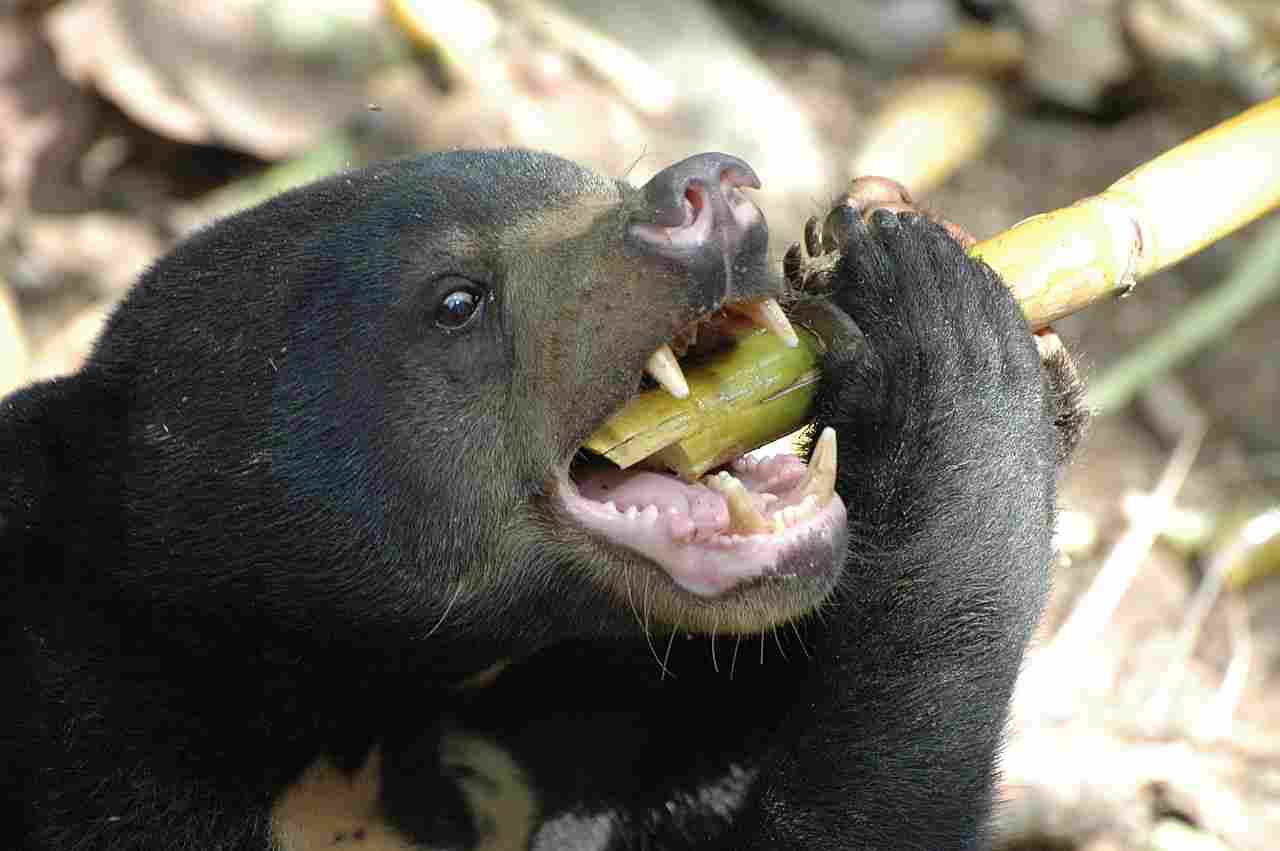
9). Attack and Defense Method(s)
When it comes to attack and defense methods, both bears and lions have unique strategies that they employ in different situations.
Lions primarily rely on their sharp claws and powerful jaws for both offense and defense. Their retractable claws allow them to grip and immobilize their prey, while their strong jaws deliver a lethal bite. Lions are known for their cooperative hunting behavior, where they work together in groups to bring down larger prey. This teamwork enhances their chances of success and ensures their safety during confrontations with potential threats.
On the other hand, bears have their own set of attack and defense methods. Bears have strong forelimbs equipped with sharp claws that they use for digging, climbing, and swiping at adversaries. Their powerful bite force, as discussed in the previous section, also plays a crucial role in their attack and defense strategies. Bears are known to stand on their hind legs and use their size and strength to intimidate and fend off potential threats.
Comparing the attack and defense methods of bears and lions, it is difficult to determine which is more efficient. Both animals have evolved unique adaptations that suit their respective ecological niches. Lions excel in group hunting and rely on their speed and agility, while bears rely on their strength and size to overpower adversaries. The effectiveness of their attack and defense methods depends on various factors such as the specific situation, prey size, and individual animal’s skill and experience.
*Hypothetical Conflict
When considering a hypothetical conflict between a bear and a lion, it is important to analyze their physical attributes and behaviors to determine which animal would likely come out on top.
In terms of size and weight, bears generally have the advantage. They are larger and heavier than lions, which gives them a greater physical presence and strength. Bears also have a skeletal anatomy that is well-suited for their powerful attacks and defense strategies. On the other hand, lions are known for their speed and agility, which allows them to quickly maneuver and evade potential threats.
In a direct confrontation, a bear is likely to defeat a lion using its superior strength, weight, and bite force. The relative strength and endurance of the animals would play a significant role in the outcome, as well as their bite force. Bears have a strong bite force, which can cause serious damage to their opponents. Lions, on the other hand, rely on their sharp claws and powerful jaws to immobilize their prey.
It is important to note that these hypothetical conflicts are unlikely to occur in the wild, as bears and lions inhabit different ecosystems and have different feeding habits. However, in a hypothetical scenario where these two animals were forced to engage in a conflict, the outcome would likely be determined by the specific circumstances and the individual skills and experiences of the animals involved.
*Behavioral Evaluation
10). Feeding/Predation Habits
Feeding habits play a crucial role in understanding the ecological niche of animals. When comparing bears and lions, it is important to consider their feeding and predation habits.
Both bears and lions are carnivores, but their food sources differ. Lions primarily prey on large herbivores such as zebras, wildebeests, and buffalo. They are skilled hunters that rely on their speed, agility, and cooperative hunting strategies to bring down their prey. On the other hand, bears have a more varied diet. While they are also capable hunters, they are opportunistic feeders and will consume a wide range of food sources including fish, small mammals, insects, berries, and even plant matter.
In terms of mode of predation, lions are known for their ambush hunting style. They rely on stealth and coordination to get close to their prey before launching a surprise attack. Bears, on the other hand, can employ different hunting techniques depending on the situation. Some species, like the grizzly bear, are known for their powerful charge and physical strength, while others, like the polar bear, are skilled at hunting seals in the water.
When it comes to feeding, lions typically use their sharp teeth and strong jaws to tear apart the carcasses of their prey. Bears, on the other hand, have a more versatile feeding method. They use their strong claws and teeth to catch and tear apart their prey, but they are also capable of using their paws to dig for food or manipulate objects.
11). Social Behavior
When comparing the social behavior of bears and lions, it is evident that they have distinct approaches to social interaction. Lions are highly social animals, living in prides consisting of multiple females, their offspring, and a few dominant males. This social structure allows for cooperative hunting, protection of territory, and shared parental care. Lions communicate through vocalizations, scent marking, and physical contact, reinforcing social bonds within the pride.
On the other hand, bears are generally solitary animals, with the exception of females with cubs. Male bears are known to be solitary and territorial, while female bears may tolerate the presence of other females and their cubs in their home range. Bears communicate through scent marking and vocalizations, but their social interactions are limited compared to lions.
The difference in social behavior between bears and lions can be attributed to their ecological and evolutionary adaptations. Lions’ cooperative hunting and social structure have evolved to maximize their success in taking down large prey and defending their territory. Bears, on the other hand, have adapted to a more solitary lifestyle, allowing them to efficiently forage for a wide range of food sources and avoid competition.
12). Aggressive Tendency
When evaluating the aggressive tendencies of bears and lions, it is important to consider the conditions that can trigger aggression in these animals. Both bears and lions have the potential to exhibit aggressive behavior, but the factors that provoke aggression may differ.
In the case of lions, aggression is often observed during territorial disputes with other prides or when defending their young. Lions are known to fiercely protect their territory and offspring, displaying aggression towards intruders or potential threats. Additionally, competition for resources such as food and water can also lead to aggressive encounters among lions.
Bears, on the other hand, may display aggression in response to perceived threats or when defending their cubs. Male bears can be particularly territorial and aggressive towards other males, especially during the mating season. However, bears are generally less aggressive compared to lions, and their solitary nature reduces the likelihood of aggressive encounters.
It is important to note that aggression in both bears and lions is a natural behavior that serves a purpose in their respective ecosystems. Understanding the triggers and patterns of aggression can help humans and pets avoid potentially dangerous situations when encountering these animals in the wild.
While both bears and lions have the potential to exhibit aggression, lions are generally more aggressive due to their social structure and territorial nature. Bears, although capable of aggression, are typically less confrontational and more inclined to avoid conflict when possible.
13). Danger to Humans (and Pets)
When considering the danger posed by bears and lions to humans and pets, it is important to evaluate their respective capabilities and behaviors. While both animals have the potential to cause harm, there are certain factors that make lions arguably more dangerous.
Lions possess a combination of stealth, agility, and unpredictability that can make them formidable predators. They are responsible for a significant number of human deaths each year, particularly in areas where human settlements overlap with their natural habitats. Lions have been known to attack and kill humans, especially when they feel threatened or when there is a scarcity of their natural prey.
In contrast, bears are generally less likely to harm humans or pets unless provoked or if they perceive a threat to their cubs. While bear attacks do occur, they are relatively rare compared to lion attacks. Bears are more inclined to avoid human contact and will typically retreat if given the opportunity.
It is important for humans to exercise caution and take precautionary measures when encountering either bears or lions in the wild. This includes maintaining a safe distance, avoiding direct eye contact, and making noise to alert the animals of your presence. Additionally, keeping pets on a leash and not leaving food or garbage accessible can help minimize the risk of attracting these animals.
While both bears and lions have the potential to pose a danger to humans (and pets), lions are generally considered more dangerous due to their stealth, agility, and unpredictability.
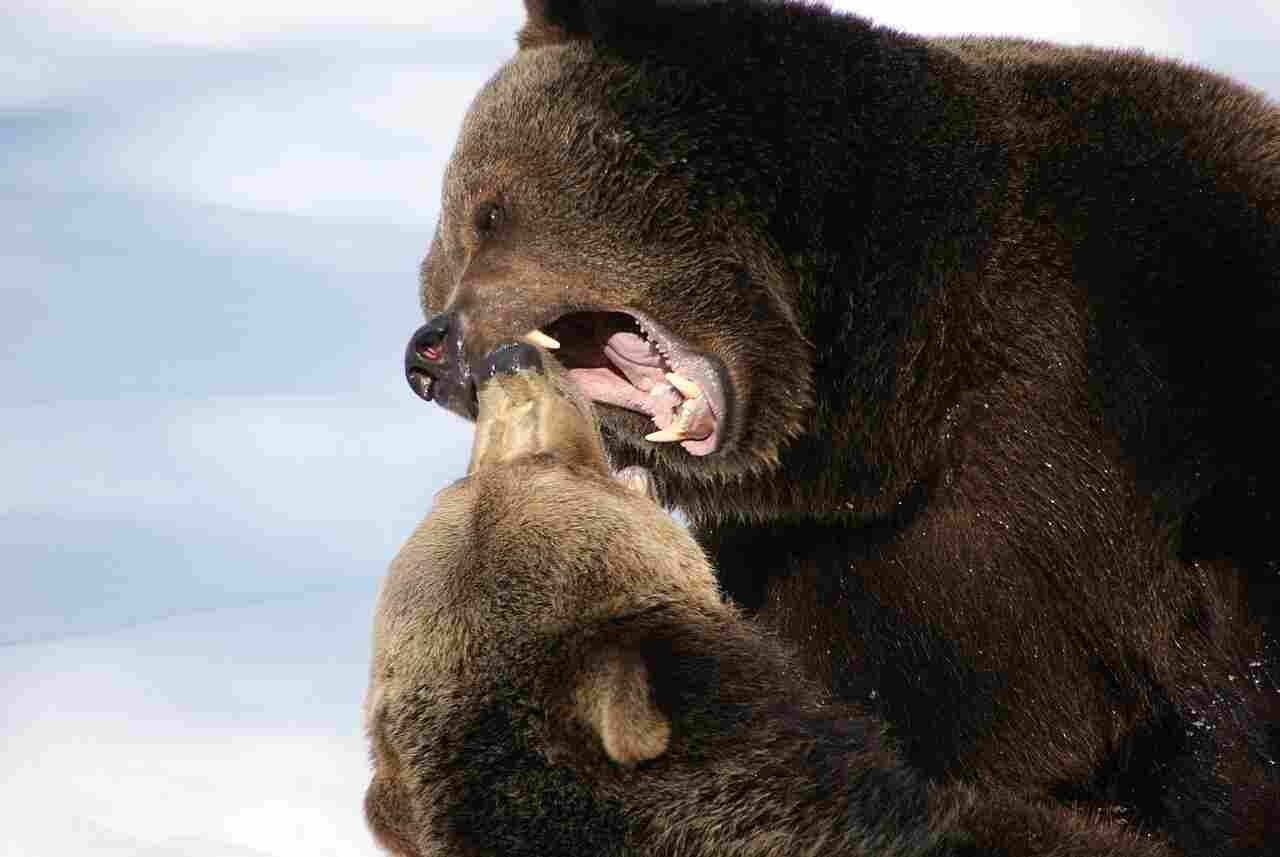
13a). Likelihood of Interaction (With Humans)
When considering the likelihood of interaction with humans, it is important to compare the behavior and habitat preferences of bears and lions.
Bears are often found around human settlements, especially in areas where there is easy access to food sources such as garbage or improperly stored food. Their strong sense of smell and opportunistic nature can lead them to venture into residential areas in search of food. However, it is worth noting that bear encounters are still relatively rare, and most bears will avoid human contact if given the chance.
On the other hand, lions are less likely to be found near human settlements. They tend to prefer open grasslands and savannas, which are typically far from densely populated areas. However, in some cases where human settlements encroach upon lion territories, there is an increased likelihood of interaction. This can lead to conflicts between humans and lions, especially if the lions perceive humans as a threat or if their natural prey is scarce.
13b). Precautionary Measure(s)
When it comes to encountering bears or lions, it is crucial to know the appropriate precautionary measures to ensure your safety.
If you encounter a bear, it is important to remain calm and avoid sudden movements. Back away slowly while facing the bear, and do not run or turn your back on it. Make yourself appear larger by raising your arms and speaking in a firm, assertive voice. If the bear approaches you, use bear spray if available, aiming for the bear’s face. If a physical attack occurs, play dead by lying flat on your stomach with your hands clasped behind your neck and your legs spread apart to make it harder for the bear to flip you over.
In the case of a lion encounter, it is essential to maintain eye contact and stand your ground. Do not run, as this may trigger the lion’s instinct to chase. Back away slowly while keeping the lion in your sight. If the lion charges, try to appear larger by raising your arms and shouting loudly. Use any available objects to deter the lion, such as sticks or rocks. If a lion attacks, fight back aggressively, targeting its vulnerable areas like the eyes and nose.
Remember, these precautionary measures are meant to minimize the risk of harm during an encounter. It is always advisable to consult local authorities or wildlife experts for specific guidelines and regulations regarding bear or lion encounters in your area. By being prepared and knowledgeable, you can ensure your safety and coexist with these magnificent creatures in their natural habitats.
*Ecological Evaluation
14). Taxonomic Classification
The taxonomic classification of bears and lions reveals their evolutionary relationship and provides insights into their similarities and differences. Bears belong to the family Ursidae, while lions are part of the family Felidae. Both species are classified under the order Carnivora, indicating their shared carnivorous tendency.
Within the Ursidae family, bears are further classified into different genera and species. For example, the American black bear is classified as Ursus americanus, while the polar bear is known as Ursus maritimus. On the other hand, lions are classified as Panthera leo, with various subspecies such as the African lion (Panthera leo leo) and the Asiatic lion (Panthera leo persica).
Although bears and lions are both carnivores, their taxonomic classification places them in different families and genera. This implies that they are not closely related from an evolutionary standpoint. Despite this, a comparison of these animals can still be made based on their physical characteristics, behavior, and ecological roles.
15). Skin/Coat Texture, Camouflage
The skin and coat texture of bears and lions play a crucial role in their survival and adaptation to their respective environments. Bears have a thick and shaggy coat, which provides insulation and protection against the cold weather. The texture of their fur varies depending on the species, ranging from coarse to soft. This variation in texture helps bears to blend in with their surroundings, making them less visible to potential predators or prey.
On the other hand, lions have a short and smooth coat, which is ideal for their habitat in the grasslands and savannas. The color of their fur is typically a sandy or tawny shade, allowing them to camouflage effectively in the golden grasses. This camouflage helps lions to stalk their prey without being easily detected, increasing their chances of a successful hunt.
In terms of coloration, bears exhibit a wide range of hues, including black, brown, cinnamon, and even white in the case of polar bears. This variation in coloration allows bears to adapt to different environments, such as forests, mountains, and Arctic regions. Lions, on the other hand, have a more uniform coloration, which aids in their camouflage within the grassy plains.
16). Reproduction
When it comes to reproduction, bears and lions have distinct strategies that are adapted to their respective environments. Bears are viviparous, meaning they give birth to live young. After a gestation period that varies depending on the species, female bears typically give birth to one to four cubs. The cubs are born helpless and rely on their mother for nourishment and protection. This reproductive strategy allows bears to ensure the survival of their offspring in harsh environments.
On the other hand, lions are also viviparous, giving birth to live young after a gestation period of approximately 100 days. Lionesses usually give birth to a litter of one to six cubs, with two to four being the average. The cubs are born blind and rely on their mother for care and sustenance. This reproductive strategy allows lions to maintain their social structure and increase their chances of survival in the grasslands and savannas.
In terms of reproductive success, both bears and lions face challenges. Factors such as habitat loss, hunting, and climate change can impact their ability to reproduce and raise offspring. Conservation efforts are crucial to ensure the long-term survival of these magnificent creatures and their reproductive capabilities.
17). Lifespan
The lifespan of bears and lions can vary depending on various factors such as their habitat, diet, and overall health. In the wild, bears have an average lifespan of around 20 to 30 years, although some species can live up to 40 years. Lions, on the other hand, have a slightly shorter lifespan in the wild, with an average of 10 to 14 years.
In captivity, both bears and lions have the potential to live longer due to the availability of regular food, veterinary care, and protection from natural predators. Captive bears can live up to 40 years or more, while captive lions have been known to live up to 25 years or longer.
When comparing the lifespan of these animals, it is important to consider the differences in their natural habitats. Bears are generally found in a wide range of ecosystems, including forests, mountains, and tundra, which can provide them with a more diverse diet and potentially longer lifespan. Lions, on the other hand, are primarily found in grasslands and savannas, where they rely on hunting for their food and face more competition from other predators.
While bears generally have a longer lifespan than lions, the specific lifespan of each species can vary depending on their environment and other factors.
18). Habitat
The habitat of bears and lions plays a crucial role in shaping their behavior, diet, and overall survival. Bears are known to inhabit a wide range of ecosystems, including forests, mountains, and tundra. They have adapted to thrive in diverse environments, from the dense forests of North America to the snowy landscapes of the Arctic. This versatility allows bears to have access to a variety of food sources, such as berries, fish, and small mammals, depending on their specific habitat.
On the other hand, lions are primarily found in grasslands and savannas, where they can camouflage themselves and stalk their prey effectively. These open habitats provide lions with the advantage of visibility, allowing them to spot potential prey from a distance. The grasslands also support a diverse range of herbivores, which serve as the main food source for lions.
While bears and lions may occasionally overlap in certain regions, such as the grasslands of Africa, their preferred habitats differ significantly. Bears are more adaptable and can thrive in a wider range of ecosystems, while lions are specialized for life in open grasslands. This distinction in habitat preference contributes to the differences in their behavior, diet, and hunting strategies.
19). Geographic Range
The geographic range of bears and lions encompasses different regions and parts of the world. Bears have a wide distribution, with various species found in North America, Europe, Asia, and even parts of South America. They can be found in diverse habitats, ranging from the dense forests of North America to the rugged mountains of Asia and the Arctic tundra. This extensive range increases the chances of bears crossing paths with other animals in nature.
On the other hand, lions are primarily found in Africa, with a small population in the Gir Forest of India. They inhabit grasslands and savannas, which are prevalent in sub-Saharan Africa. Lions have a more limited geographic range compared to bears, but their presence in these open habitats allows for interactions with a diverse range of herbivores.
While bears and lions may share certain regions, such as the grasslands of Africa, their geographic ranges are distinct. Bears have a broader distribution, spanning multiple continents, while lions are mainly confined to Africa. This difference in geographic range influences the opportunities for these animals to interact with each other and shape their behavior and ecological roles.
20). Ecologic Importance
Bears, with their omnivorous diet, have a significant impact on the environment. They are known as keystone species, meaning that their presence and activities have a disproportionate effect on the ecosystem. Bears help disperse seeds through their feces, promoting the growth of plants and maintaining biodiversity. Additionally, they regulate populations of prey species, such as fish and small mammals, which helps maintain the overall health of the ecosystem.
Lions, as apex predators, also have a vital role in their ecosystem. They help control the population of herbivores, preventing overgrazing and maintaining the balance of the food chain. By targeting weaker or older individuals, lions contribute to the overall health and genetic diversity of the prey species. Their presence also influences the behavior and distribution of other animals, shaping the dynamics of the ecosystem.
21). Conservation Status
The conservation status of both bears and lions is a matter of concern due to their threatened or endangered status. These majestic creatures face numerous challenges that put their survival at risk.
Bears, such as the polar bear and the giant panda, are classified as vulnerable or endangered due to habitat loss, climate change, and illegal hunting. The destruction of their natural habitats, primarily caused by human activities, has resulted in a significant decline in their populations. Conservation efforts focus on protecting their habitats, implementing stricter regulations against hunting, and raising awareness about the importance of preserving these iconic species.
Similarly, lions are also facing a decline in their numbers and are classified as vulnerable. Habitat loss, human-wildlife conflict, and poaching are the main threats to their survival. The conversion of their natural habitats into agricultural land and the encroachment of human settlements have led to a decrease in their range and availability of prey. Conservation initiatives aim to mitigate these threats by establishing protected areas, promoting coexistence between humans and lions, and combating illegal wildlife trade.
Both bears and lions play crucial roles in their respective ecosystems, and their conservation is essential for maintaining biodiversity and ecological balance.
22). Main Threats to Survival
The main threats to the survival of both bears and lions are a result of human activities and environmental changes.
For bears, habitat loss is a significant concern. Deforestation, urbanization, and the expansion of agricultural land have led to the destruction of their natural habitats. This loss of habitat limits their access to food sources and disrupts their mating and hibernation patterns. Additionally, climate change poses a threat to bears, particularly polar bears, as melting ice caps reduce their hunting grounds and access to prey.
Lions, on the other hand, face threats such as habitat loss and fragmentation. The conversion of their natural habitats into agricultural land and human settlements has resulted in a decrease in their available range and prey. This forces lions to come into closer contact with humans, leading to conflicts and an increased risk of poaching. Poaching, driven by the illegal wildlife trade, further exacerbates the decline in lion populations.
Both bears and lions also face the threat of human-wildlife conflict. As human populations expand and encroach upon their territories, interactions between humans and these apex predators become more frequent. This can result in retaliatory killings, as well as the depletion of prey species due to overhunting.
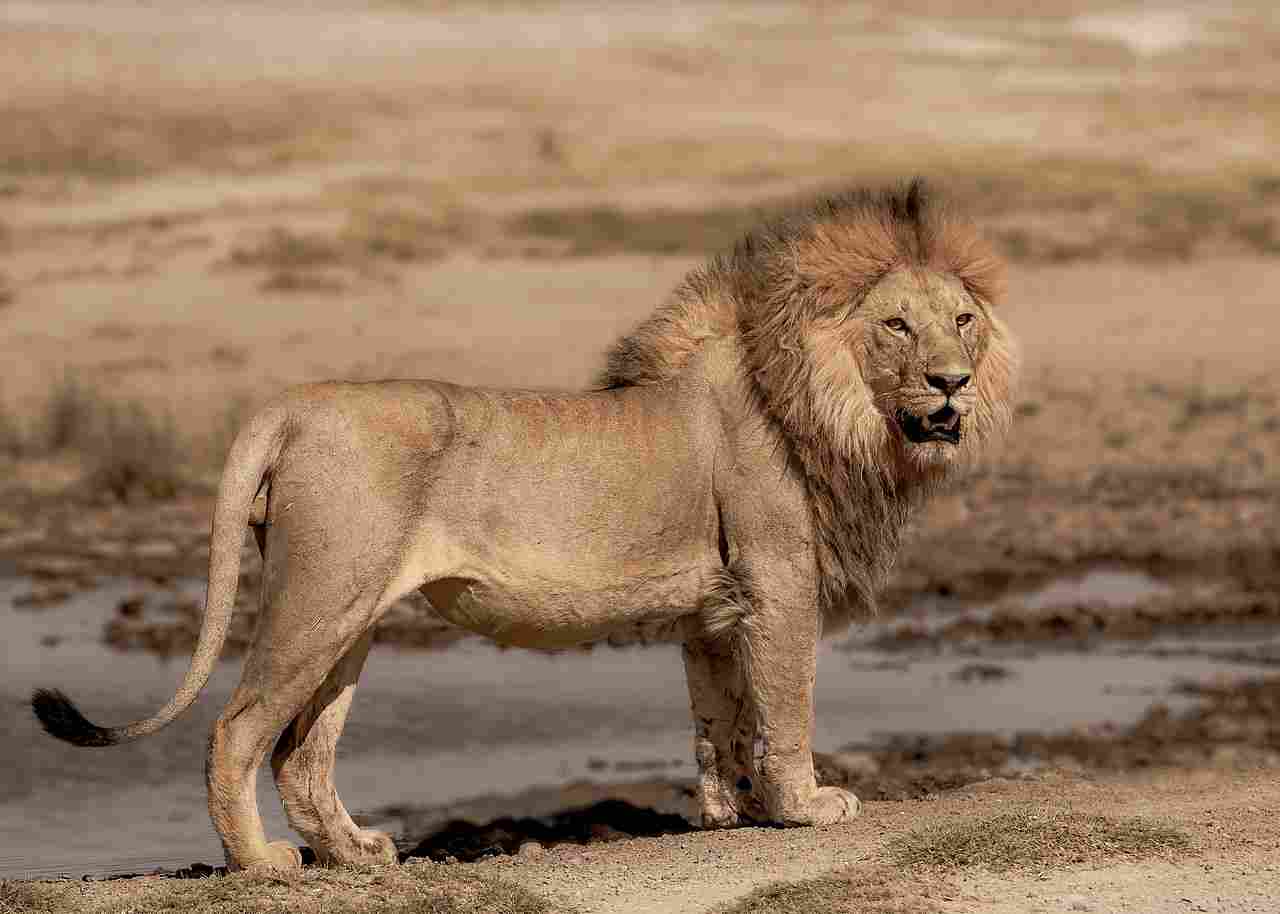
Conclusion
-Similarities
When comparing bears and lions, there are several key similarities to consider. Firstly, both species are large predators, occupying the top of their respective food chains. Secondly, they are both highly adapted for hunting and have powerful physical attributes. Bears and lions are also known for their social behavior, with individuals forming family units or prides.
Additionally, both species have a wide geographic range and can be found in various habitats around the world. Lastly, bears and lions play important ecological roles and contribute to the balance of their ecosystems.
-Differences
The most significant difference between bears and lions is their mode of locomotion. Bears are known for their plantigrade walk, where they walk with the entire sole of their foot touching the ground. On the other hand, lions have a digitigrade walk, where they walk on their toes, with only the tips of their toes touching the ground.
This difference in locomotion affects their speed and agility, with lions being faster and more agile than bears. Additionally, lions have a more specialized skeletal anatomy for running and chasing down prey, while bears have a more versatile skeletal structure for climbing and digging.
-Hypothesis
In a violent confrontation between a bear and a lion, it is difficult to determine a clear winner. Both animals possess unique strengths and abilities that could give them an advantage in different scenarios. The bear’s size and strength, coupled with its powerful bite force, make it a formidable opponent.
On the other hand, the lion’s speed, agility, and hunting prowess make it a formidable predator. Ultimately, the outcome of such a conflict would depend on various factors, including the size and age of the individuals involved, the environment, and the specific circumstances of the encounter.
